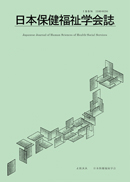Volume 5, Issue 1
Displaying 1-11 of 11 articles from this issue
- |<
- <
- 1
- >
- >|
-
Article type: Article
1998Volume 5Issue 1 Pages 1-
Published: October 24, 1998
Released on J-STAGE: September 15, 2017
Download PDF (150K) -
Article type: Article
1998Volume 5Issue 1 Pages 3-7
Published: October 24, 1998
Released on J-STAGE: September 15, 2017
Download PDF (791K) -
Article type: Article
1998Volume 5Issue 1 Pages 9-16
Published: October 24, 1998
Released on J-STAGE: September 15, 2017
Download PDF (805K) -
Article type: Article
1998Volume 5Issue 1 Pages 17-24
Published: October 24, 1998
Released on J-STAGE: September 15, 2017
Download PDF (849K) -
Article type: Article
1998Volume 5Issue 1 Pages 25-34
Published: October 24, 1998
Released on J-STAGE: September 15, 2017
Download PDF (995K) -
Article type: Article
1998Volume 5Issue 1 Pages 35-40
Published: October 24, 1998
Released on J-STAGE: September 15, 2017
Download PDF (610K) -
Article type: Article
1998Volume 5Issue 1 Pages 41-47
Published: October 24, 1998
Released on J-STAGE: September 15, 2017
Download PDF (730K) -
Article type: Article
1998Volume 5Issue 1 Pages 49-60
Published: October 24, 1998
Released on J-STAGE: September 15, 2017
Download PDF (1163K) -
Article type: Article
1998Volume 5Issue 1 Pages 61-70
Published: October 24, 1998
Released on J-STAGE: September 15, 2017
Download PDF (925K) -
Article type: Article
1998Volume 5Issue 1 Pages 71-77
Published: October 24, 1998
Released on J-STAGE: September 15, 2017
Download PDF (715K) -
Article type: Article
1998Volume 5Issue 1 Pages 79-87
Published: October 24, 1998
Released on J-STAGE: September 15, 2017
Download PDF (964K)
- |<
- <
- 1
- >
- >|
